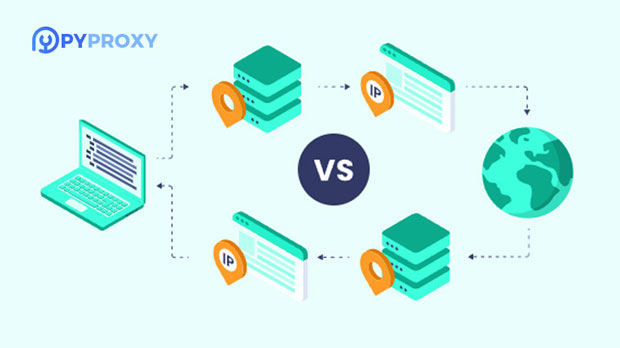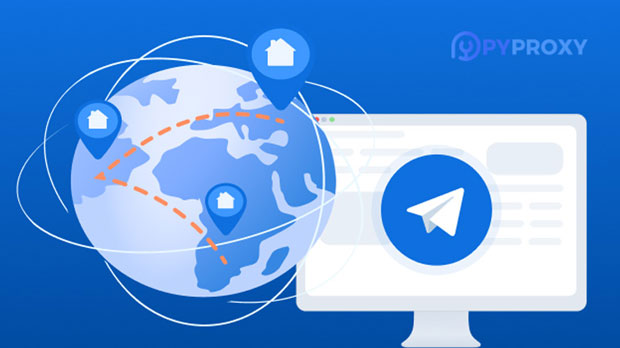When it comes to choosing unmetered residential proxies, evaluating the balance between price and performance is crucial for making an informed decision. Residential proxies, particularly those that are unmetered, offer a broad range of uses, from web scraping to bypassing geo-restrictions. However, the right choice depends on a combination of factors such as cost, speed, reliability, and overall usability. This article aims to provide a comprehensive guide on how to assess the price-performance ratio of unmetered residential proxies, focusing on key elements that can help you choose the most suitable option for your needs. Understanding Unmetered Residential ProxiesBefore diving into the evaluation process, it is important to understand what unmetered residential proxies are. These proxies are sourced from real residential IP addresses and typically come without a specific bandwidth limit. This means users can make unlimited requests without worrying about hitting data caps. The "unmetered" feature is especially beneficial for heavy users, such as businesses involved in large-scale data scraping, ad verification, or SEO research.Residential proxies, as opposed to data center proxies, offer a higher degree of anonymity and reliability, making them ideal for tasks that require a human-like browsing pattern. Unmetered proxies, in particular, can handle higher volumes of traffic, providing a more flexible solution for intensive operations. Key Factors for Evaluating Price-Performance RatioSeveral factors should be considered when evaluating the price-performance ratio of unmetered residential proxies. These include proxy quality, geographical coverage, bandwidth capabilities, speed, and customer support.1. Proxy Quality and IP Pool SizeThe quality of the proxies plays a significant role in determining their effectiveness. A large IP pool, consisting of millions of IP addresses from various locations, can provide greater flexibility and help avoid detection. The more diverse and expansive the proxy network, the better its performance in overcoming IP bans and CAPTCHAs. Typically, providers offering larger IP pools will charge higher rates due to the cost of maintaining these large networks. However, larger networks also offer better performance, especially when used for tasks like web scraping, where IP rotation is essential to avoid detection. Therefore, when evaluating price-performance, consider how critical the size and quality of the IP pool are to your specific use case.2. Geographical Coverage and Target LocationsThe geographical coverage of a residential proxy network is another crucial element to consider. For certain tasks, such as accessing region-specific content or conducting market research, proxies from specific countries or regions may be required. Some unmetered residential proxy providers offer a wider selection of locations at a higher price, while others may only cover a limited number of regions. The geographical diversity of the proxy network can impact its overall performance and utility. Evaluate whether the proxy service provides the locations you need at an acceptable price point.3. Bandwidth and SpeedBandwidth and speed are critical for ensuring the smooth execution of tasks like data scraping, browsing, and content streaming. While unmetered proxies offer unlimited data usage, speed performance can vary significantly between providers. Low-speed proxies can result in delays, errors, and time-outs, especially when dealing with large volumes of data.When assessing the price-performance ratio, it's important to find a balance between cost and speed. Proxies that offer high-speed connections typically come with a higher price tag. However, investing in high-speed proxies may be worth it if your tasks require real-time performance, such as competitive intelligence, price monitoring, or web crawling.4. Reliability and UptimeReliability is another essential factor when evaluating residential proxies. Unmetered residential proxies are often chosen for their stability and uptime, as consistent performance is critical for business operations. A proxy network with frequent downtimes or one that fails to connect can severely disrupt your operations.To gauge the reliability of a provider, check for any guarantees or service level agreements (SLAs) they offer. While no service can guarantee 100% uptime, reputable providers typically promise uptime between 99-99.9%, which ensures a minimal risk of downtime. This should be factored into the overall price-performance evaluation.5. Customer Support and ServiceCustomer support is an often-overlooked aspect of choosing residential proxies but is crucial for long-term satisfaction. A responsive and knowledgeable support team can help you quickly resolve issues and optimize your use of the proxies.Unmetered residential proxy services with poor or limited customer support may become frustrating to deal with, especially if you encounter performance issues or require technical assistance. Before committing to a provider, research their reputation for customer support and check if they offer 24/7 assistance or dedicated account managers.6. Pricing Structure and Payment FlexibilityPricing for unmetered residential proxies can vary greatly between providers. Some charge based on usage, while others may offer fixed monthly or annual subscription plans. Be sure to compare the pricing models to see which one aligns best with your business or personal requirements.Additionally, some proxy services may offer discounts for bulk purchases, long-term commitments, or payment flexibility, which can be a deciding factor when weighing price against performance. Always ensure that the pricing is transparent, and there are no hidden fees that could unexpectedly increase costs.7. Reputation and ReviewsA provider’s reputation and user reviews can provide valuable insight into the true quality of their unmetered residential proxies. It’s important to check for feedback from customers who have used the proxies for similar purposes to assess whether the service performs as advertised. Reliable proxy providers will often have positive reviews regarding speed, customer support, and overall performance.Additionally, user feedback on forums, review websites, or social media can give you a realistic understanding of the potential challenges or issues with a given provider.Evaluating the price-performance ratio of unmetered residential proxies involves balancing multiple factors, including proxy quality, geographical coverage, bandwidth, speed, reliability, customer support, and pricing structure. There is no one-size-fits-all solution, as the ideal choice depends on your specific requirements and the tasks you plan to perform with the proxies.In general, while cheaper proxies may save you money upfront, they may lack the necessary speed or reliability for demanding tasks. On the other hand, premium-priced proxies often offer superior performance and support, which could justify the investment, particularly for businesses with high operational demands.
Aug 29, 2025



































































